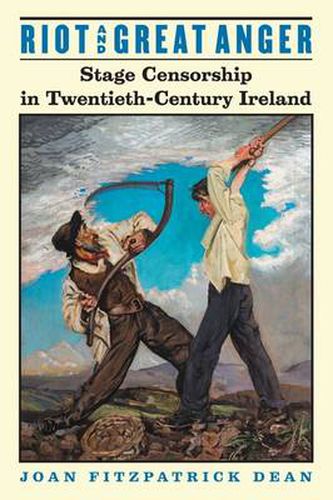Readings Newsletter
Become a Readings Member to make your shopping experience even easier.
Sign in or sign up for free!
You’re not far away from qualifying for FREE standard shipping within Australia
You’ve qualified for FREE standard shipping within Australia
The cart is loading…






Joan FitzPatrick Dean’s Riot and Great Anger suggests that while there was no state censorship, the theatre often evoked heated responses from theatergoers, sometimes resulting in riots and the public denouncement of playwrights and artists. Dean examines the plays that provoked these controversies, the degree to which they were
censored
by the audience or patrons, as well as the range of responses from both the press and the courts. She addresses familiar pieces such as those of William Butler Yeats as well as the work of less known playwrights. Dean’s original research meticulously analyzes this great theatrical tradition, both on the stage and off, concluding that the public responses to these controversial productions reveal a country that was more pluralistic, heterogeneous, and complex than the usual Catholic versus Protestant, urban versus rural, or pro-versus anti-treaty dichotomies associated with Ireland.
$9.00 standard shipping within Australia
FREE standard shipping within Australia for orders over $100.00
Express & International shipping calculated at checkout
Joan FitzPatrick Dean’s Riot and Great Anger suggests that while there was no state censorship, the theatre often evoked heated responses from theatergoers, sometimes resulting in riots and the public denouncement of playwrights and artists. Dean examines the plays that provoked these controversies, the degree to which they were
censored
by the audience or patrons, as well as the range of responses from both the press and the courts. She addresses familiar pieces such as those of William Butler Yeats as well as the work of less known playwrights. Dean’s original research meticulously analyzes this great theatrical tradition, both on the stage and off, concluding that the public responses to these controversial productions reveal a country that was more pluralistic, heterogeneous, and complex than the usual Catholic versus Protestant, urban versus rural, or pro-versus anti-treaty dichotomies associated with Ireland.